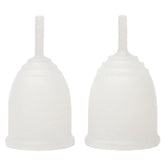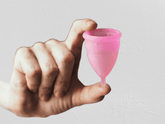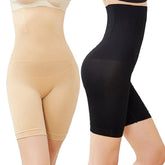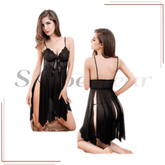Piercing Jewelry: Enhancing Personal Style with Adornments
Piercing Jewelry: Enhancing Personal Style with Adornments
Introduction:
Piercing jewelry is an artistic and stylish form of body adornment that has been practiced for centuries across various cultures and Enhancing Personal Style with Adornments. It involves inserting jewelry into specific body parts that have been punctured, creating a unique fashion statement. From ears to noses, navels to eyebrows, piercing jewelry adds a touch of individuality and self-expression to one's personal style. This article delves into the world of piercing jewelry, exploring its purpose, types, and alternative names, while also providing insights into how to use and care for it properly.
What is Piercing Jewelry?
-
Piercing jewelry refers to the decorative items inserted into body piercings.
-
Normally, these adornments are self-possessed of a variation of resources, as well as metals, jewels, polymers, or organic elements like wood or bone.
-
To accommodate several perceptions and piercing places, they are accessible in a wide variation of forms, dimensions, and charms.

How to Use Piercing Jewelry:
Using piercing jewelry involves a delicate and precise process to ensure both comfort and safety. The general procedures are as follows:
- Select an experienced piercer: Look for a reputed piercing studio or qualified piercer with the required training, expertise, and respect to hygienic standards.
- Consultation: Discuss your desired piercing location and jewelry options with the piercer. They can provide guidance on suitable jewelry types and sizes.
- Sterilization and numbing: The piercer will sterilize the area and may apply a local anesthetic if necessary.
- Piercing process: The piercer will use sterilized needles or tools to create an opening for the jewelry, followed by inserting the jewelry into the fresh piercing.
- Aftercare instructions: The piercer will provide you with specific aftercare instructions to promote healing and minimize the risk of infection. Following these instructions diligently is crucial.
Types of Piercing Jewelry:
- Studs: These are simple and versatile designs, commonly used for ear piercings. They consist of a straight post with a decorative top.
- Hoops: Circular or semi-circular in shape, hoops are popular for various piercings such as nostrils, lips, and ear cartilage. They can be continuous rings or have a clasp mechanism.
- Barbells: Comprising a straight bar with threaded ends, barbells are often used for tongue, nipple, and eyebrow piercings. The ends can be decorative balls, spikes, or other shapes.
- Captive Bead Rings (CBRs): These consist of a hoop with a captive bead or ball that is held in place by the tension of the ring. CBRs are common for earlobes, septum, and lip piercings.
- Dermal Anchors: Unlike traditional piercing jewelry, dermal anchors are implanted under the skin using a small base. They allow for more unique placements and designs.
-
Retainers: These transparent or flesh-toned pieces are used to conceal piercings for situations where jewelry might not be appropriate, such as in professional environments.

Certainly! Here are some examples of popular piercing jewelry types, along with their benefits and potential allergies:
- Example: Studs
Benefits: Studs are versatile and widely used for various ear piercings. They come in a variety of styles, including as basic metallic balls, studs with jewels, and pearls. Studs are easy to wear every day and are comfy.
Allergies: Certain metals used in studs, such nickel, may cause allergic responses in certain people. It's crucial to use hypoallergenic materials like titanium or surgical-grade stainless steel if you have sensitive skin.
- Example: Hoops
Benefits: Hoops are a customary choice for tendon piercings in the ears, lips, and nose. They are offered in a multiplicity of sizes and thicknesses to accommodate various tastes and fashions. Conditional on the design, jewels can give a hint of sophistication or edginess.
Allergies: Comparable to studs, some people may have an allergy to certain of the metals used in hoops. Consider choices like titanium, niobium, or gold, which are less prone to induce allergic responses, when choosing materials.
- Example: Barbells
Benefits: Tongue, nipple, and eyebrow piercings are regularly done using barbells. They deliver a fresh, discreet artistic and are simple to clean and maintain Barbells also come with a variety of sizes, specifications, and elaborate ends for altering.
Allergies: Pay attention to the materials recycled into different types of barbells as they may cause adverse reactions. Constituents like titanium, niobium, or PTFE (polytetrafluoroethylene) are appropriate for persons who are allergic to metals.
- Example: Captive Bead Rings (CBRs)
Benefits: CBRs are versatile and widely used for earlobes, septum, and lip piercings. They come in different diameters and gauges, allowing for customization and a range of styles. CBRs are relatively easy to insert and remove.
Allergies: The beads in captive bead rings can be made of different materials, so it's crucial to choose hypoallergenic options. Materials like titanium, niobium, or high-quality glass beads are recommended for individuals with metal allergies.
Benefits of Piercing Jewelry:
- Self-expression: Piercing jewelry allows individuals to showcase their unique style, personality, and creativity.
- Fashion and aesthetics: Piercing jewelry enhances personal appearance, adding a touch of elegance, edge, or whimsy to an outfit.
- Cultural and symbolic significance: Certain piercing jewelry carries cultural, traditional, or spiritual meanings, connecting individuals to their heritage or belief systems.
- Versatility: With a wide range of jewelry designs available, individuals can switch up their looks and experiment with different styles and combinations.

Allergies and Sensitivities:
- Allergies to piercing jewelry can occur due to individual sensitivities to certain metals.
- Nickel is a common allergen, causing contact dermatitis and skin irritations.
- Cobalt, chromium, and certain alloys are other metals that may cause allergic reactions.
- The danger of allergic responses can be greatly decreased by using hypoallergenic materials like titanium, niobium, surgical-grade stainless steel, or premium glass.
- It's essential to speak with a qualified piercer if you have a known metal allergy or sensitive skin so they can direct you toward suitable materials and provide you the right aftercare recommendations for your particular needs.
Alternative Names for Piercing Jewelry:
Piercing jewelry can be referred to by various alternative names depending on the region, culture, or specific style. Some of these names include:
- Body jewelry
- Body adornments
- Body piercings
- Body modifications
- Piercing ornaments
- Body art accessories
Conclusion:
Piercing jewelry offers a dynamic way to express personal style and create a distinctive aesthetic. With an extensive range of designs and materials available, there is an option to suit every preference and piercing location. Remember to approach a professional piercer, follow proper aftercare instructions, and choose high-quality jewelry to ensure a safe and enjoyable piercing experience.
Short Summery for SEO
Piercing jewelry:
Express your style with unique adornments. Learn how to use and care for various types of jewelry. Discover alternative names and be aware of potential allergies. Find your perfect look!









